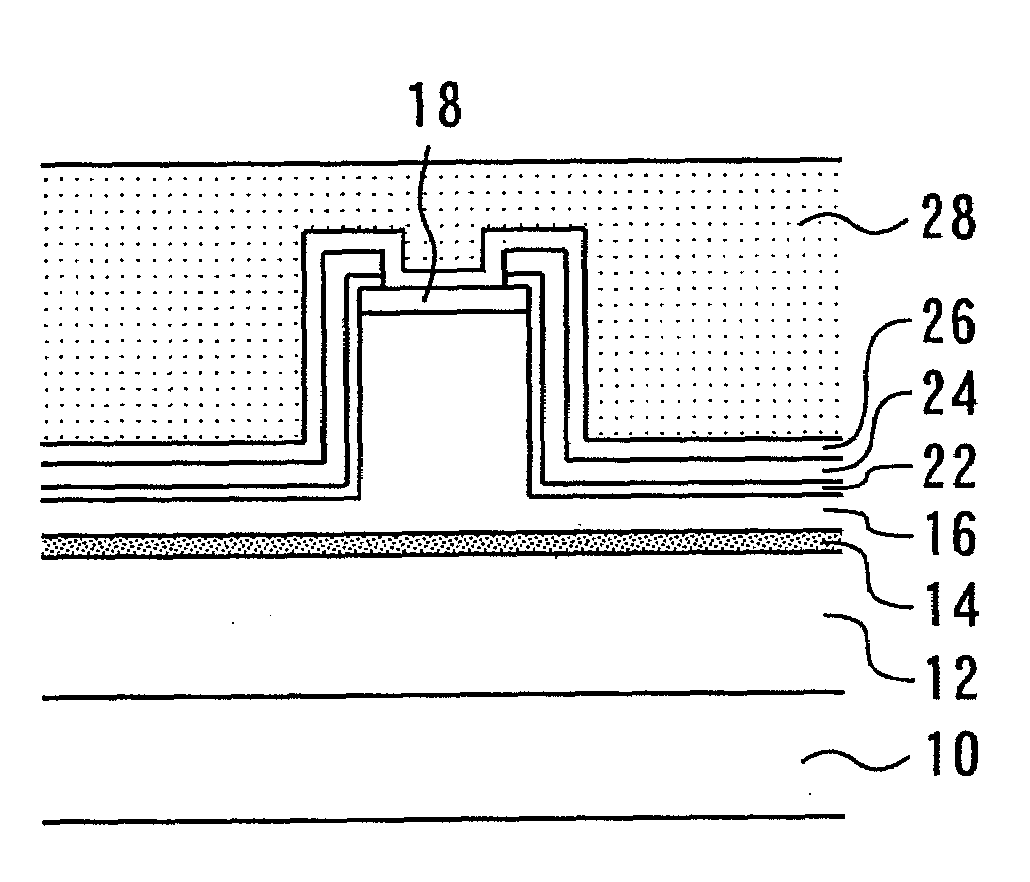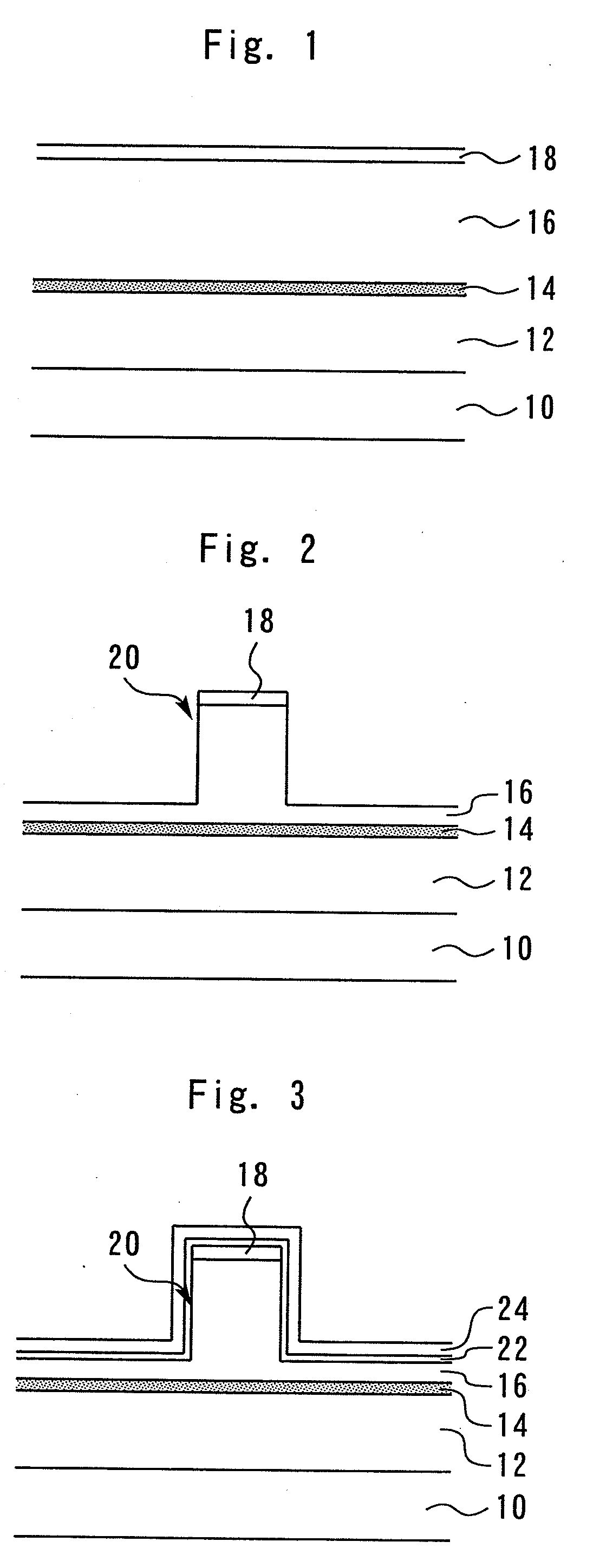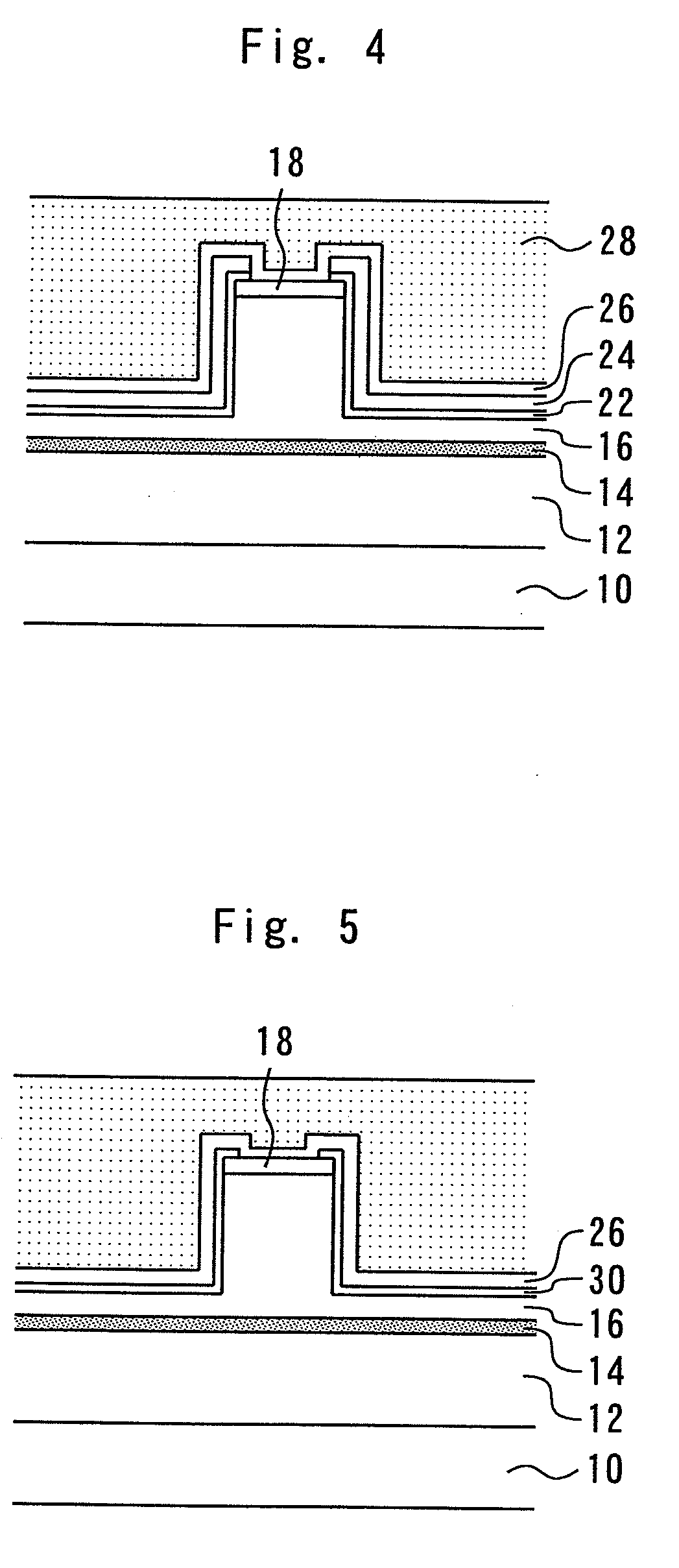Method of manufacturing semiconductor laser
a manufacturing method and laser technology, applied in the direction of lasers, semiconductor devices, semiconductor lasers, etc., can solve the problems of ridge semiconductor lasers being especially susceptible to such stress, change in optical characteristics, and stress in the layer, so as to reduce the efficiency of semiconductor lasers, increase the thickness of insulating films, and reduce the effect of efficiency
- Summary
- Abstract
- Description
- Claims
- Application Information
AI Technical Summary
Benefits of technology
Problems solved by technology
Method used
Image
Examples
first embodiment
[0022]There will be described, with reference to accompanying drawings, a method of manufacturing a semiconductor laser according to a first embodiment of the present invention.
[0023]First, an n-type cladding layer 12 (serving as a first conductivity type semiconductor layer), an active layer 14, a p-type cladding layer 16 (serving as a second conductivity type semiconductor layer), and a contact layer 18 are sequentially formed on top of one another on a GaAs substrate 10 (serving as a semiconductor substrate), as shown in FIG. 1. Next, a ridge 20 is formed in the p-type cladding layer 16 by means of photolithography and dry etching, as shown in FIG. 2.
[0024]An SiN film 22 (serving as a first insulating film) is then formed on the p-type cladding layer 16 to a thickness of 50 nm by thermal CVD at a temperature of approximately 600° C., as shown in FIG. 3. An SiN film 24 (serving as a second insulating film) is then formed on the SiN film 22 to a thickness of 100 nm by plasma CVD at...
second embodiment
[0033]There will be described, with reference to accompanying drawings, a method of manufacturing a semiconductor laser according to a second embodiment of the present invention. It should be noted that components corresponding to those of the first embodiment bear the same reference numerals and will not be further described (unless necessary).
[0034]First, an n-type cladding layer 12, an active layer 14, a p-type cladding layer 16, and a contact layer 18 are sequentially formed on top of one another on a GaAs substrate 10, and then a ridge 20 is formed in the p-type cladding layer 16, as in the first embodiment.
[0035]Next, an SiN film 22 is formed over the entire surface of the p-type cladding layer 16, as shown in FIG. 7. An SiN film 24 is then formed on the SiN film 22 in such a manner that the SiN film 24 covers only a central region 36 of the resonator, as shown in FIG. 8. It should be noted that the SiN film 24 is formed at lower temperature than the SiN film 22. Subsequently,...
third embodiment
[0037]There will be described, with reference to accompanying drawings, a method of manufacturing a semiconductor laser according to a third embodiment of the present invention. It should be noted that components corresponding to those of the first embodiment bear the same reference numerals and will not be further described (unless necessary).
[0038]First, an n-type cladding layer 12, an active layer 14, a p-type cladding layer 16, and a contact layer 18 are sequentially formed on top of one another on a GaAs substrate 10, and then a ridge 20 is formed in the p-type cladding layer 16, as in the first embodiment.
[0039]Next, an SiN film 32 (serving as an insulating film) is formed on the p-type cladding layer 16 by thermal CVD at a temperature of approximately 600° C., as shown in FIG. 9.
[0040]Etching using a fluorine-containing gas is then performed to thin the SiN film 32 on end regions 34 of the resonator to a thickness of 100 nm or less, as shown in FIG. 10 (the end regions 34 of ...
PUM
 Login to View More
Login to View More Abstract
Description
Claims
Application Information
 Login to View More
Login to View More - R&D
- Intellectual Property
- Life Sciences
- Materials
- Tech Scout
- Unparalleled Data Quality
- Higher Quality Content
- 60% Fewer Hallucinations
Browse by: Latest US Patents, China's latest patents, Technical Efficacy Thesaurus, Application Domain, Technology Topic, Popular Technical Reports.
© 2025 PatSnap. All rights reserved.Legal|Privacy policy|Modern Slavery Act Transparency Statement|Sitemap|About US| Contact US: help@patsnap.com



